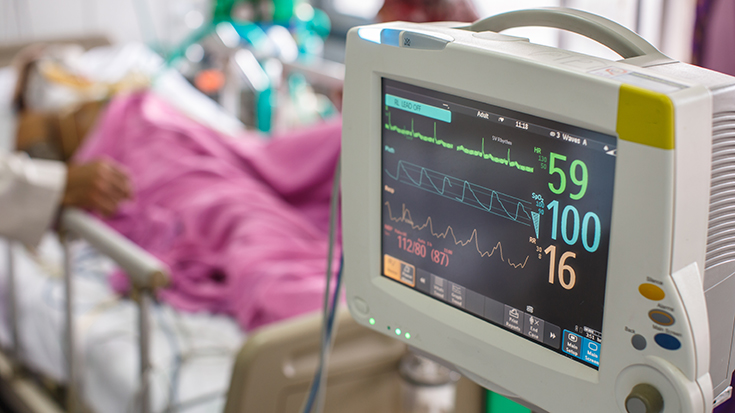Mechanical ventilation is the practice of passing air to the lungs while using ventilating machines to enable patients to breathe easily. It plays a vital role while treating patients suffering from temporary or critical respiratory failure. Healthcare staff continues to ventilate patient until and unless they find him fit enough to breathe on his own. Once the patient starts recovering, he is gradually removed from the ventilator so that he can smoothly march towards his recovery.
In this article, we’ll consider some guidelines and strategies outlined in 2023 for successful weaning from mechanical ventilation. But before we go further it is important to have a clear understanding of weaning.
Understanding Weaning Process – What Is Weaning of Ventilator Patient?
The process of taking a patient off the ventilator is known as weaning in medical terms. A patient is weaned from the ventilator only when his condition seems stable, and he successfully passes spontaneous breathing trials through endotracheal tube and then finally without tube.
It is a notable fact that the decision of when to wean a patient from ventilator and how is the matter of equivalent importance as the decision to put patient on ventilator. A timely and successful weaning from mechanical ventilators is more likely to shorten the ventilation duration along with lower risk of infections and mortality and increase survival rate.
On the note, weaning demands some special protocols and consideration so that no further harm is done to the health of the patient. Considering the importance of this matter special guidelines have been outlined in 2023 to deliver professionals modern and evidence-based practices of weaning.
What is Weaning Criteria? When Ventilator Patient Should Be Weaned Off?
The decision to wean off the patient from ventilator is critical and demands some keen observations regarding patient’s progress and response. It is paramount to observe the patient regularly to assess improvement in his respiratory function. To opt out weaning, healthcare providers need to check the variations in I:E ratio (inspiratory vs expiratory ratio), positive end-expiratory pressure (PEEP) value, underlying respiratory rate and tidal volume along with airway pressure.
The healthcare professionals can note down changes in aforesaid values along with the response of the patient against different changes in ventilation settings on intervals to calculate his respiratory health. These keynotes can help in making timely decisions about taking the patient off ventilator. This decision is significant because the earlier a patient leaves ventilator the faster his lung function recovers.
What Are Protocols of Weaning Patient Off From Ventilator?
The procedure of weaning from mechanical ventilation may vary when it comes to different patients, medical professionals and facilities provided to the patients. Keeping in mind the importance of successful weaning and safety of the patient, most healthcare institutions encourage the idea of following a structure of predefined rules to ensure positive outcomes. These protocols list down some specific values regarding breathing criteria to ensure the survival of the patient without breathing support.
Generally, weaning is initiated when the patient starts breathing at oxygen saturation level maintained at more than 92%, less than 40% – 50% FiO2, less than 35 respiratory rates and tidal volume to respiratory rate ratio less than 100 breaths/min without showing any signs of discomfort. When these protocols are met the patient is tested for unsupported breathing trials and once, he is able to breathe independently for the whole day he is considered ready for weaning.
Spontaneous Breathing Trials (SBT) Before Weaning
Spontaneous breathing technique is the most practiced method to account the self-breathing ability of any patient and to gather basic information required to decide about discontinuing mechanical ventilation. It is recommended by American Thoracic Society Clinical Practice Guidelines to practice this breathing trial weekly initially for half an hour and subsequently for 2 hours. These trials are helpful in determining whether a patient needs to continue ventilation or not. It is generally accepted that SBT is directly related to intubation period. It is thence important to take timely decisions about weaning.
Patient showing normal breathing for continuous 120 minutes without ventilator support can be removed from ventilator permanently. However, this alone is not the predictor of weaning decision. Other factors that can influence this decision are respiratory rate more than 38bpm, SpO2 less than 92%, tidal volume less than 325 ml and heart rate 25% above baseline.
There is also a list of guidelines that healthcare professionals are supposed to follow to make the right decision at the right time.
- SBT is conducted when the patient is still on ventilation or sometimes, depending on the condition of the patient, attached to T-piece, independent source of oxygen.
- Patient is tested on minimal ventilator settings if not removed from breathing support devices.
- SBT is considered a failure when the patient fails to pass 120 minutes (about 2 hours) breathing trial.
Extubation Considerations
A patient is ready to be extubated quite after he meets the weaning criteria as well as protocols.
Extubation can be performed by two methods:
Terminal Weaning: Patient is tested against low values of ventilation before extubation.
Immediate Extubation: As name suggests patient is off to mechanical support without any prior decrease in machine settings.
The studies show that latter (immediate extubation) is painful and can obstruct the airways as well as cause respiratory distress.
It is to note down that the duty of professionals does not end after extubation phase. Rather it is a must practice observing the patient for the coming 1-2 days to detect and timely respond to any possible complications like aspiration, respiratory distress or reintubation. Patients generally show symptoms of distress after getting to normal breathing mechanism. Thus, it is recommended to ease the patient while using sedated medicines as well as connecting him with his friends and family.
Challenges Associated with Weaning A Patient From Ventilator
The failure of weaning a patient from mechanical ventilation comes with certain challenges if not timely opted. If weaning is started before time it may lead to cardio-respiratory failure while on the other hand, weaning too late results in failure due to weakness of respiratory muscles.
Also, the results of weaning are unpredictable and unfavorable if the patient has a medical history of cardiac dysfunction, respiratory failure or acute respiratory illness. The age and history of home ventilation are other important pointers that can prove to be a hurdle in the weaning process. This is why the professionals need to consider all these factors before planning to discontinue ventilation.
Conclusion
A number of guidelines are set in the current year, 2023, regarding weaning a patient from mechanical ventilation. These guidelines, if followed properly, can guide healthcare professionals to safely shift the patient from mechanical ventilator to spontaneous breathing and ultimately independent breathing. Important point to consider during the weaning process is to adopt a multidisciplinary approach along with keen observation and patient centered mindset.
Are You In Need of 24/7 Care For A Ventilator Dependent Patient?
If so, BetterOptions services are the ideal choice for those seeking a residential facility that offers the highest quality of care for ventilated patients with integrated facilities. You can Call Us Now (+01) (360) 607-8028) OR Send An Email for further details.


